Because the past is a sealed world, what we know of it we’ve replanted in our own soil and viewed through our own strange light. Canvases rolled up and left in the attic or discarded by relatives hoping to forget the dead are lost. What of the loyal who guard their own family’s past? Sentimental attachments do not long survive each generation’s efforts to define itself. In a capitalist country, an artwork’s only hope is to have attracted monetary value, but even the cash-worthy have a tough time avoiding time’s edit.
When photographs fade, paintings crack and sculptures crumble, the living give up on them. Exceptions are artworks stored in museums. There they’ll remain till they go out of fashion and can be later lost (deaccessioned) in a larger forgetting.
Enter art historians. Although the Northwest has had few, one of the best is currently alive: David Martin of the Martin-Zambito Gallery, specializing in American art from the 19th century to the 1940s, with a focus on the Northwest.
Whatcom Museum senior curator Barbara Matilsky wisely consulted him for her Show of Hands: Northwest Women Artists 1880-2010, which is why the exhibit’s early years are so compelling.
Compelling but disjointed. There is no way to create a narrative that spans 130 years of Northwest art. The picked-over past remains remote, and the present top heavy. If this exhibit were an essay, its lack of transitions would cause it to crumble.
Part of my reaction can be attributed to my mistake on the entry path. Instead of turning left along the corridor along a series of Margie Livingston‘s whorls of paint and Victoria Haven’s wall painting, I turned right from Livingston and Haven and dumped myself into the exhibit’s endpoint, in the past.
Livingston, Lacey Yellow Loops, 2009
Acrylic
12 x 15.25 inches
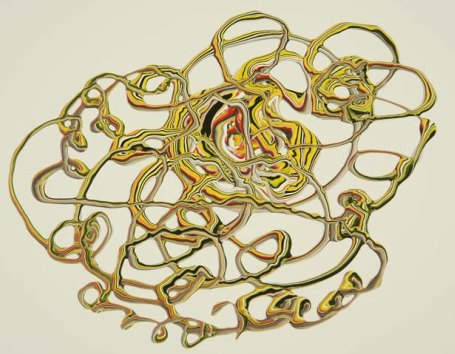 Victoria Haven, Site-specific wall painting for the Whatcom Museum, 2010
Victoria Haven, Site-specific wall painting for the Whatcom Museum, 2010
(Unlike many artists devoted to geometries, Haven never slips into formula.)
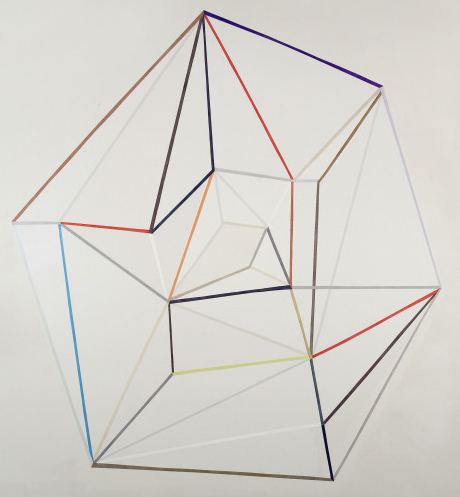 The clean lines and rigorously pale tonalities of Louise Crow‘s Eagle Dance at San Ildefonso, 1919, softened the fall. This painting was a tiny step from a dumpster till rescued at the very last minute.
The clean lines and rigorously pale tonalities of Louise Crow‘s Eagle Dance at San Ildefonso, 1919, softened the fall. This painting was a tiny step from a dumpster till rescued at the very last minute.
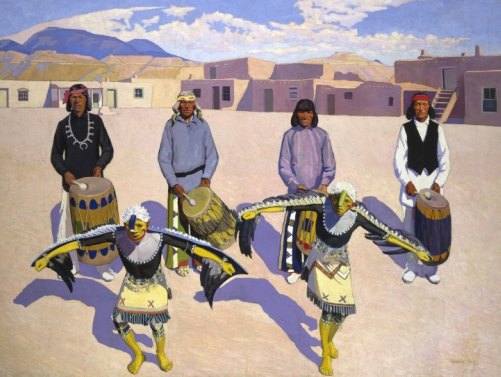 Seattle has the Northwest School, reduced in many minds to Mark Tobey, Morris Graves, Guy Anderson and Kenneth Callahan. Vancouver has Emily Carr. The world keeps Tobey and Graves alive, while the Northwest continues to support the remaining three.
Seattle has the Northwest School, reduced in many minds to Mark Tobey, Morris Graves, Guy Anderson and Kenneth Callahan. Vancouver has Emily Carr. The world keeps Tobey and Graves alive, while the Northwest continues to support the remaining three.
Emily M. Carr (1871-1945)
Untitled, c. 1920
Oil on composition board
12 15/16 x 16 in. (board)
Henry Art Gallery, gift of Mrs. Viola Patterson
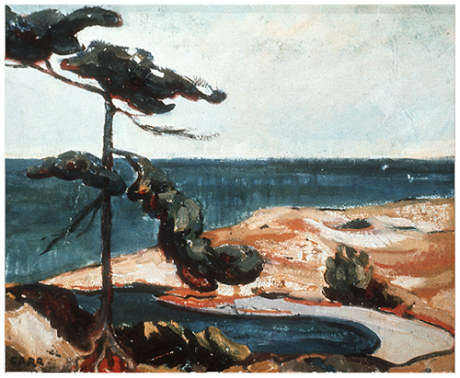 Helen Loggie was a briliant printmaker, attracted to nothing but trees.
Helen Loggie was a briliant printmaker, attracted to nothing but trees.
Loggie, King Goblin, 1939
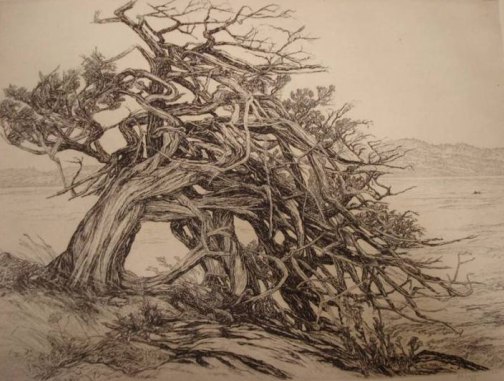 The 1940s through the 1980s look pretty good, with Helmi, Maude Kerns, Margaret Tomkins, Sally Haley, Patti Warashina, Mary Henry, Doris Chase, Karin Helmich, Gwen Knight, Norie Sato, Fay Jones and Elizabeth Sandvig.
The 1940s through the 1980s look pretty good, with Helmi, Maude Kerns, Margaret Tomkins, Sally Haley, Patti Warashina, Mary Henry, Doris Chase, Karin Helmich, Gwen Knight, Norie Sato, Fay Jones and Elizabeth Sandvig.
Sandvig, Broken Columns, early 1970s
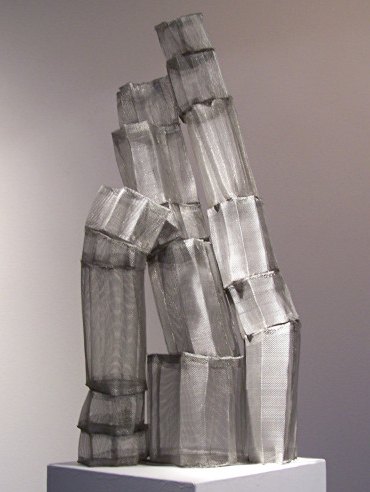 Working off Kandinsky, Leo Kenny is much better than Maude Kerns. While he trusted his forms, she cluttered up her background, but, hey, this show is girls-only. (In a Northwest art exhibit spanning 130 years that wants to rescue some of the forgotten, picking only women makes as much sense as picking only the left-handed. Everybody’s forgotten.)
Working off Kandinsky, Leo Kenny is much better than Maude Kerns. While he trusted his forms, she cluttered up her background, but, hey, this show is girls-only. (In a Northwest art exhibit spanning 130 years that wants to rescue some of the forgotten, picking only women makes as much sense as picking only the left-handed. Everybody’s forgotten.)
Which brings us to the unruly present. Operating under the bloom-where-you’re-planted rule, Matilsky probably felt she had to include local fave Susan Bennerstrom, but, like Seattle’s Kathleen Gemberling Adkison, Bennerstrom is a dead spot where the ball won’t bounce. There are better choices close to the WA/B.C. divide, such as Jasmine Valandani.
Sheila Klein, however, is a fine choice. Stand, 2000
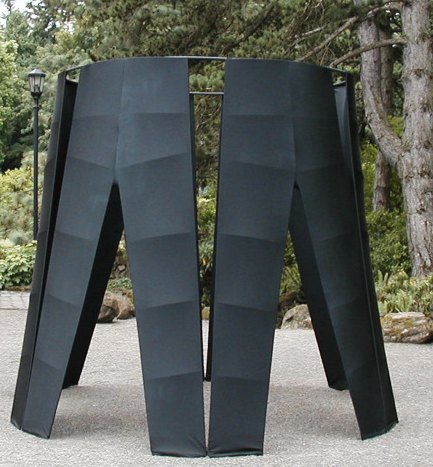 South of Seattle, so is Gail Tremblay. An Iroquois Dreams That the Tribes of the Middle East Will Take the Message of Deganawida to Heart and Make Peace, 2009
South of Seattle, so is Gail Tremblay. An Iroquois Dreams That the Tribes of the Middle East Will Take the Message of Deganawida to Heart and Make Peace, 2009
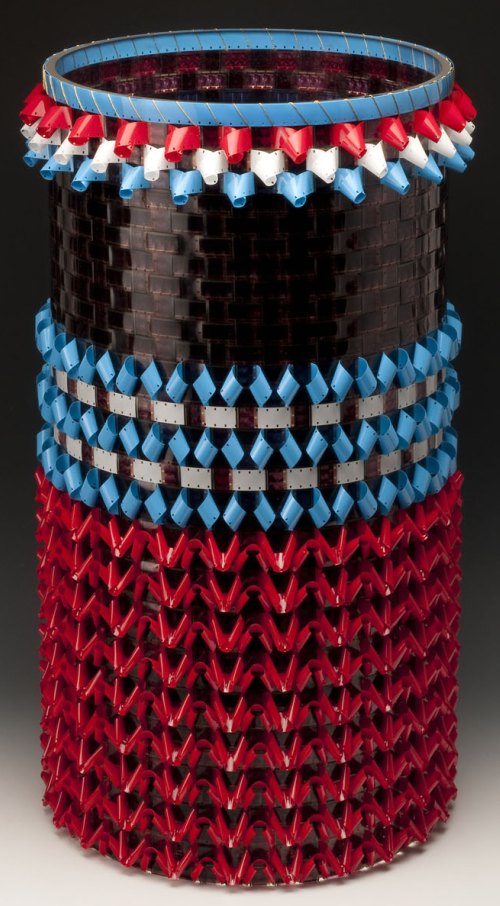 Even so, Seattle dominates the present, which didn’t have to happen. No exhibit is fair. We seek them out not for justice but for impact. On that latter score, this one suceeds.
Even so, Seattle dominates the present, which didn’t have to happen. No exhibit is fair. We seek them out not for justice but for impact. On that latter score, this one suceeds.
Take it away, Seattle.
Claire Cowie, Rhinoscape, 2006
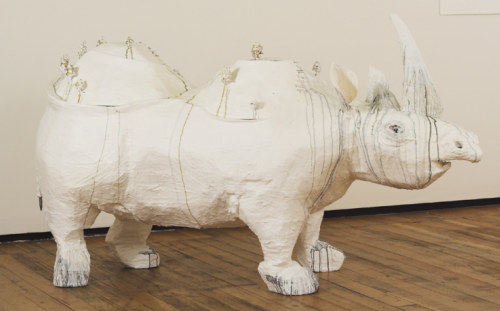 Alison Keogh, Newsprint series #4, 2007
Alison Keogh, Newsprint series #4, 2007
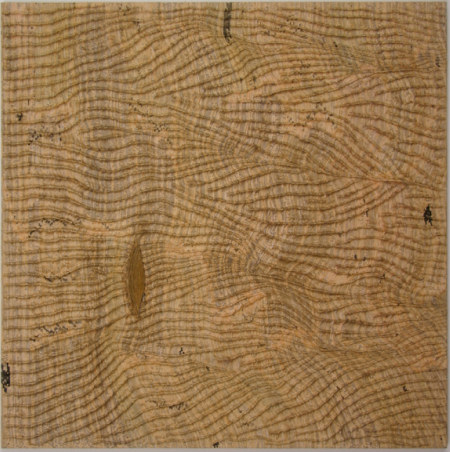 Sherry Markovitz, Mourning You/Morning Ewe, 2007
Sherry Markovitz, Mourning You/Morning Ewe, 2007
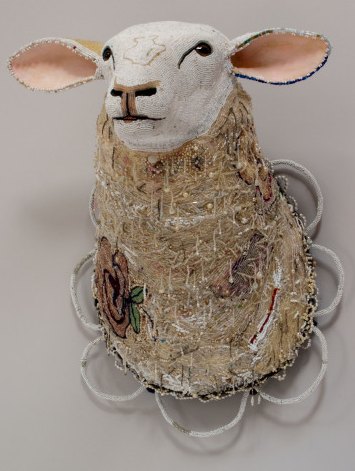 Susan Robb
Susan Robb
Gentlest Gesture, 2008
Crystal, Sakura branch, muscle wire, circuit board, Mylar, powder-coated steel shelf
8 x 24 x 17 in.
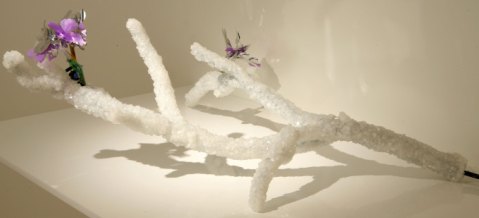 Through Aug. 8.
Through Aug. 8.



Leave a Reply